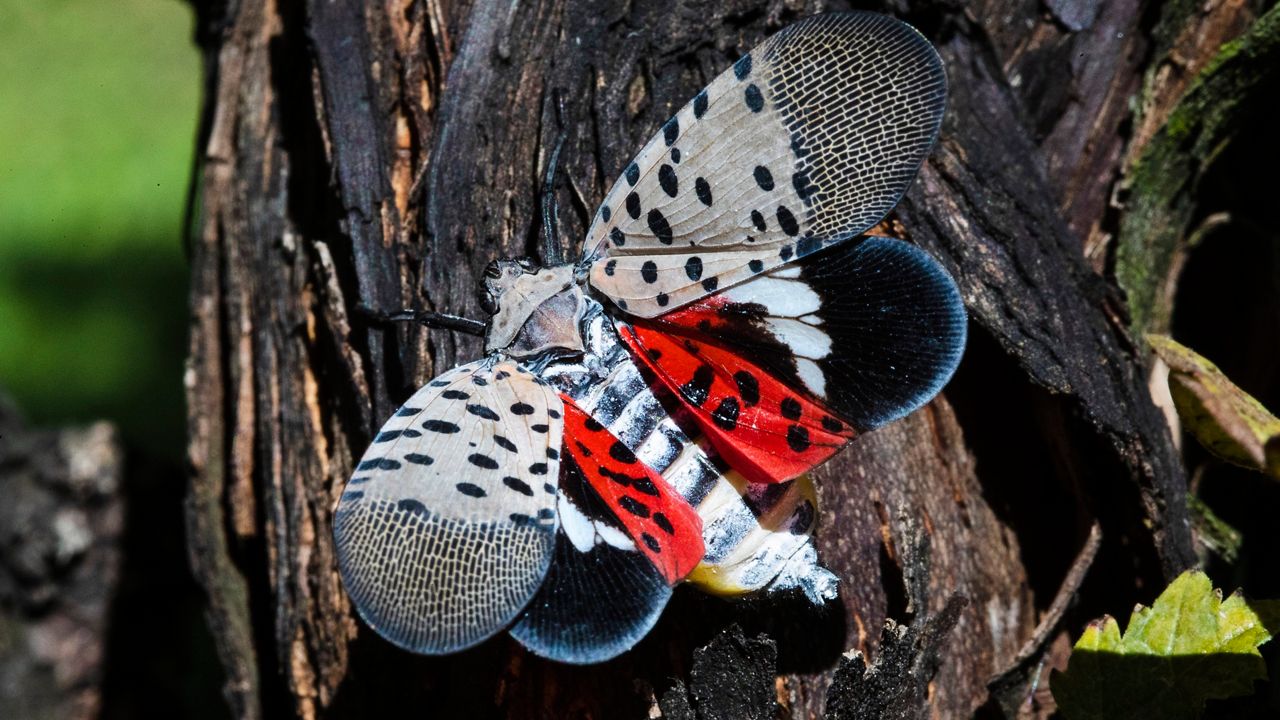Spotted lanternflies are in the Tar Heel state again, and they may take a bite out of one of North Carolina's biggest industries: agriculture.
The winged bugs have made an appearance in nearly 20 counties in North Carolina, according to East Carolina University biologists. Reports of the pest surfaced last July in Forsyth County and other places as well.
The incisive species poses a threat to woody plants and crops, according to agriculture officials. The nymphs like to eat Grapevines, tree of heaven, and sap, which will weaken and eventually kill the plant, as stated by the department.
“They like the black walnut. They like a lot of maple species,” said Dr. Mirian Watts, an entomologist and teaching assistant professor of biology at East Carolina University. “And they like grapes. So that is the concern on the economic side … where they could cause loss, they could cause farmers to spend a lot more money” on control measures.
Spotted laternfly eggs blend into trees, bark, rocks, and other materials, sometimes up to 70 feet high, making it hard for an effective plan of chemical control, as stated in the release. Nymphs are currently hatching, sporting black bodies with white dots, that will soon morph to bright red bodies with white dots by June, according to the agriculture officials.
“Early in the infestations, it was believed they could not fly,” she said, but further investigations have shown they can. “They can travel up to 10 miles in a year, and they can spread. It’s at a point where we don’t have a hope to eliminate them anymore because it’s so hard to find the eggs.”
The invasive species has been spotted throughout the state, including Onslow and Currituck counties, along with 14 others. Guilford and Forsyth counties have officially been labeled as having infestations, according to officials.
To combat the spread of the spotted lantern flies, officials urge the public to report any sightings to the N.C. Department of Agriculture and Consumer Services, and to remove any egg masses spotted on trees, and rocks with sticky bands to trap the insects or kill them.
“We should come back to what is an invasive species,” Watts said. “They might be pretty, but they are causing harm to that native plant. That plant is suffering. That plant can actually die.”
Watts said North Carolinians should not worry about killing the insects.
“They do have a natural habitat where they are out and about, and they cause no harm to anybody or anything, and that’s where they should be. But here they are causing different problems, and they should not be around.”



